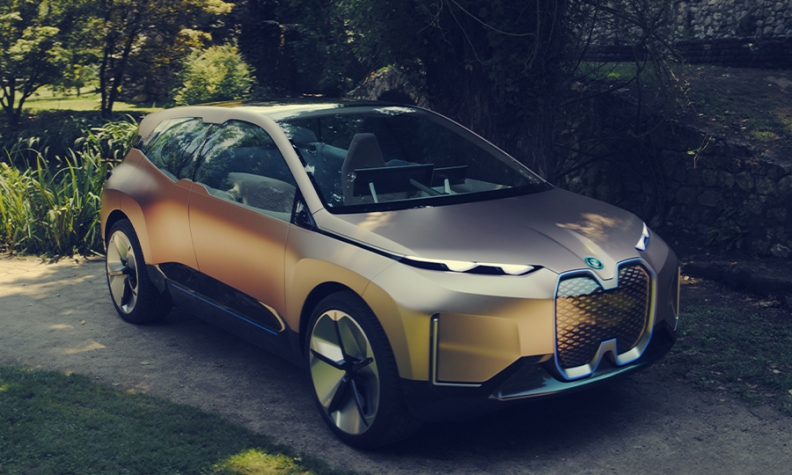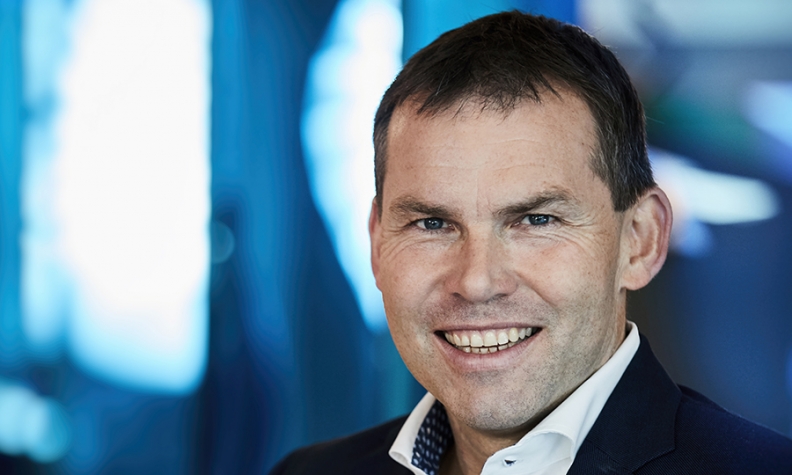BMW’s i subbrand has been the company’s technological trailblazer since it launched the i3, a full-electric city car with an ultralightweight carbon fiber frame, in 2013. BMW showed that it will continue to push the subbrand to new levels when it previewed the iNext, in September. Automotive News Europe Correspondent Christiaan Hetzner spoke with the head of the subbrand, Robert Irlinger, about how BMW is adapting its electrification strategy.
BMW Group plans to offer 12 full-electric vehicles by 2025. How many will wear the BMW badge?
We have announced four BMW electric models and one Mini; that means there are seven battery-electric models still to come. When you look at the distribution of our volumes across the brands, you can get a rough idea of what the ratio [of BMWs versus other models in the group] will be. We will try to cover the segments according to customer demands as much as possible.
Could you elaborate?
With the iX3, we are going into the compact SUV segment. The i4 is a compact sedan with a coupe-like look. The
iNext roughly has the dimensions of an X5. These are all volume segments we are entering since we believe demand for electric vehicles is growing, governments will support them and the infrastructure is expanding. We changed our strategy because our customers want us to bring electrification across a broad range of our models. They simply want to see this offered in all cars currently available.
Is that why BMW has reserved the nameplates i1-i9 and ix1-ix9? Will you need all of them for future models?
We need to prepare ourselves for this shift toward electrification. That means getting the architectures ready, but it also means securing the rights to the names. For the moment, we have announced the five EVs, and we don’t have to decide this year what comes after 2025. We have time to thrash out the details.
Are they based on your cluster architecture, also known as CLAR?
The iX3 is an exception since the base vehicle [the X3 SUV] existed already. The iX3, however, uses the fifth generation of our eDrive that the iNext will also utilize. The iNext is close to the CLAR, but it’s a little unique since we are giving ourselves the opportunity to show everything we are capable of. Every electric vehicle after that will be fully compatible with either CLAR or the equivalent architecture for front-wheel-drive vehicles. This allows us the flexibility to decide which model to build where in what volumes, since there is still a lot of uncertainty about what the market will demand in 2024 or 2025.
Is the product cadence tied to the life cycles of their combustion-engine cousins, with a potential electric 1 series arriving roughly the same time as a gasoline-powered one? \
As long as they are on the new platform, we have a certain flexibility to decide whether to launch them before, after or simultaneously. All three options are conceivable.
The i3 has struggled to live up to expectations. Will there be a replacement for the i3, or will it be repositioned as an i1 without the expensive, carbon fiber bodyshell?
I will let you speculate on that. What I can say, though, is that we had a learning process. We started with a range of 130 km to 160 km in everyday conditions [with the original 60-amp-hour cell i3]. We thought that was enough since we positioned the car for urban mobility. But the customer had a mindset that more range would be better, so we decided it was necessary to bring a second battery update relatively quickly.
Is this the frequency we should expect in the future for other models, with two battery updates every five years?
The speed at which the cell chemistry changes is enormous, but there has to be a material benefit for the customer. The first update brought 50 percent more range with the 94-amp-hour cells, and the 120-amp-hour cells now adds another 30 percent on top. Car buyers continue to ask for more range at present. But there could come a time when they say, for example, 600 km under WLTP rules [offered by the BMW iNext] is sufficient. Then maybe we won’t need to come with an update at all. If customers want 800 km and our competitors respond, then that’s a different story.
Do these frequent battery updates hurt the resale price of earlier models?
They do not play a significant role. The older i3 received top marks for residual value in Germany last year.



